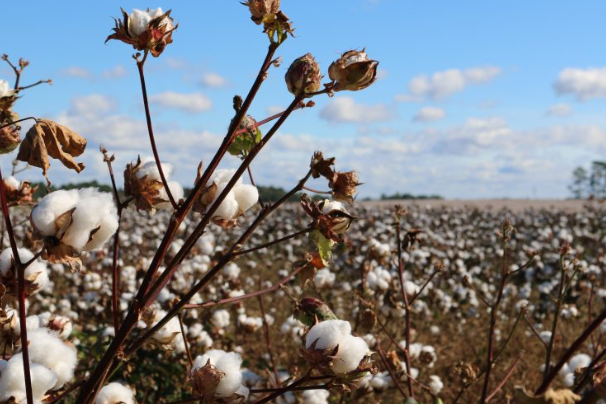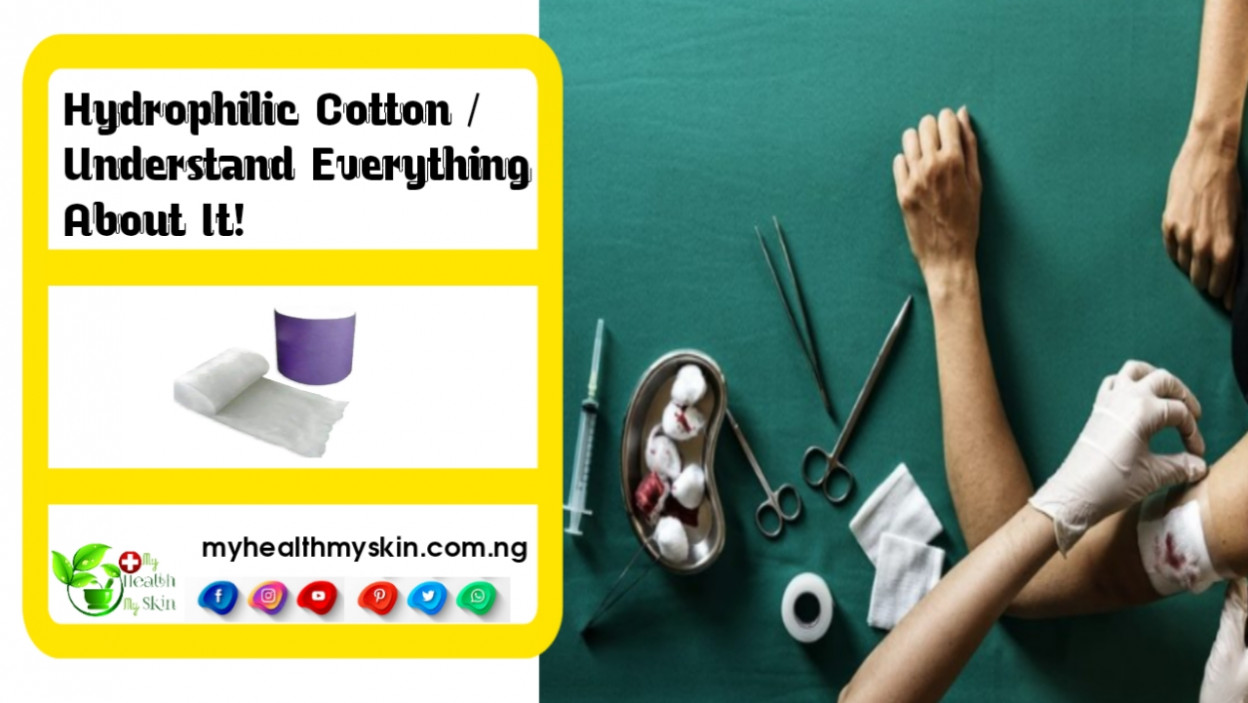Let’s talk about Hydrophilic Cotton? When we get injured, some items are essential so that the injury doesn’t turn into a serious problem.
Items such as gauze and merthiolate are some of the most common.
But another very important element that is used in the cleaning process is the hydrophilic cotton that often goes unnoticed and, however, makes all the difference when taking care of grated, cuts and small abrasions.

Read this complete article that we prepared hydrophilic cotton and learn how to use it in the best way and where to buy it at the best price and delivery condition.
[lwptoc]
What Does Hydrophilic Cotton Mean And What Is It Used For?
A hydrophilic material is one that has an affinity for water, that is, it has excellent wettability. Therefore, hydrophilic cotton is cotton with high water absorption.
Soft cotton is a special type of cotton that is dried and sterilized for use in medical procedures and general topical care. Its difference to common cotton is its ability to absorb water more easily.
The hydrophilic in the name comes precisely from this absorption capacity that ends up being very useful when we suffer some type of topical injury.
The body’s first reaction when we are injured is to bleed due to the rupture of the vessels.
The ideal is to stop the bleeding, but before that it is necessary to clean the site.
At this point, the hydrophilic cotton comes in, as it is sterilized and has a high water absorption capacity, the person can clean the place without harming it even more, unlike if it were done with a tissue or with the hands.
Its use is very common in hospitals, beauty clinics and pharmacies.
As it is a completely disposable product, the market has a very high demand for consumption of it and therefore its market ends up being very competitive.
Some Facts About Cotton In Brazil And In The World
Cotton is responsible for one of the main production chains in Brazil and in the world.
This commodity accounts for a significant portion of the country’s gross domestic product (GDP) and directly and indirectly employs millions of Brazilians.
Brazil broke several export records in December 2020.
With 370,500 tons of fiber exported, it was the biggest export month in history and also the year in which the country exported the most cotton: 2.1 million tons, an increase of 32% compared to 2019.
In terms of revenue, US$ 3.23 billion were exported in 2020, also a record, according to information from the Brazilian Association of Cotton Producers (Abrapa).
What is not imagined is that cotton is also used in various sectors, such as medicine and even in the manufacture of explosives.
To highlight some of these curiosities, let’s go to the most curious facts about cotton. Follow below:
1. It Has Several Origins
The most common species of cotton (Gossypium L.) came from Central Africa, the Arabian Peninsula, Pakistan and the Americas, regions where there are records dating from 3,000 to 4,500 BC.
The first historical references to this soft white fiber were written in Sanskrit, in the Code of Manu, considered the oldest legislation in India.
There are documents, still, pointing out that this culture was spread across Egypt, Sudan and all of Asia Minor.
The Incas in Peru and the Mexicans also used cotton well before the Discovery, mastering techniques such as fiber extraction, spinning and weaving.
With the domestication of the plant by man, the cotton fruit greatly increased in size, to gain productivity and increase resistance to diseases.
Fabric making in China dates back to 2200 BC In Greece, cotton was introduced by Alexander the Great and reached Egypt, where the best species was produced in the 5th century BC In the 18th century, after the development of spinning machines, from the mechanical loom and the cotton gin, the weaving of this fiber came to dominate the world market for yarns and fabrics.
Today, arboreal and herbaceous types are commercially cultivated
2 – The Name Comes From Arabic
The word cotton derives from the Arabic term “al-quanTum” (“the fluff”, which means fur or fluff that comes off certain types of fabrics).
It was merchants from this region who spread the plant across Europe between the 9th and 11th centuries.
The name also generated the words cotton, in English; coton, in French; cotton, in Italian; and algodón, in Spanish.
The Arabs were the first people to manufacture fabrics and papers using this fiber, something only adopted in Europe during the Crusades.
Until the Middle Ages, however, the European lower classes predominantly wore wool, linen and jute clothing.
3 – It Belongs To The Okra And Hibiscus Family
As incredible as it may seem, the cotton plant, the okra and the flowers of the Hibiscus genus have in common the fact that they belong to the Malvaceae family.
More than 2,000 species spread around the world are part of it, mainly in South America.
One of its main features is the presence of branched or scaly hairs. The yellow cotton flower even resembles that of a hibiscus.
4 – The Size Of The Fiber Indicates The Quality Of The Fabric
Long fiber cotton (greater than 32.5 millimeters) has characteristics that serve the manufacture of fine and luxury fabrics, such as the famous Egyptian thread sheets and towels.
Currently, Brazil imports long fibers, mainly from Egypt, to mix with medium fibers and produce a better quality yarn. About 97% of the world’s cotton production is short and medium fibers.
The other 3% – composed of long and extra-long fibers – are manufactured in Egypt, the United States and Peru.
These varieties are known as Giza (Egyptian), the whitest, brightest and most resistant type, and Pima (American and Peruvian), cotton that, is soft, shiny, does not form balls, has the thinnest and longest fiber in the world and its color natural is “creamy white”
5 – India Is The Largest Producer In The World
Indians lead global cotton production, with 5.7 million tons in the 2016/2017 harvest – equivalent to a quarter of the total harvested on the planet, according to the United States Department of Agriculture (USDA).
Then comes China (with 20% of world production), the United States (17%), Pakistan (7.5%), Brazil (6.2%) and others (24.3%).
Among the largest exporters are the USA (37%), India (12%), Brazil (8.5%) and Australia (11.5%).
The remaining 31% are exported by different countries. And the list of biggest cotton consumers is headed by China, India, Pakistan, Turkey, Bangladesh, USA and Brazil.
6 – Began To Be Used In Brazil By Indigenous People
Little is known about the prehistory of cotton in Brazil, but when the first Europeans arrived in the country, there were already Indian women cultivating the plant and transforming it into rudimentary threads and fabrics.
The commercial exploitation of this culture in the national territory began in 1750, in the Northeast, succeeding the mining activities commanded by the Portuguese.
During the cotton cycle, between the 18th and 19th centuries, Brazil became one of the world’s largest producers and exporters of this fiber, which was used as raw material for the English textile industry during the Industrial Revolution.
With the advance of the coffee culture, at the beginning of the 19th century, cotton ceased to be so important for export.
The situation worsened with the devastation of several plantations by an insect called the cotton boll weevil, in the 1980s, leading Brazil to need to import the product.
In the 2000s, however, the situation improved and, in 2016, national revenue from exports of this commodity reached US$ 1.215 billion, according to the Ministry of Agriculture.
7 – Mt, Ba And Ms Are The Largest National Producers
Mato Grosso accounts for almost 67% of the Brazilian cotton lint and seed production. Then appear Bahia, Mato Grosso do Sul and Goiás.
There is also production in states such as Maranhão, Minas Gerais, Piauí, Tocantins, Roraima and São Paulo.
Planting takes place from October to February and harvesting extends from March to August. About 50% of national production is exported. The biggest buyers are Indonesia, South Korea, Vietnam, Bangladesh, Pakistan, China and Malaysia.
8 – Almost 80% Of The Cotton Planted In Brazil Is Transgenic
Of the total cotton varieties grown in 2019, the country already had 1.4 million genetically modified hectares, according to the International Service for Acquisition of Agrobiotechnology Applications (ISAAA).
In Argentina, transgenic corn and cotton are spread over 3.28 million and 450 thousand hectares respectively.
Modified soybeans, on the other hand, are spread over 20.5 million hectares.
Paraguayan production occupies 3.4 million hectares of soybeans, 1.01 million hectares of corn and 10,000 hectares of cotton.

The first transgenic cotton was approved in 1995 in the United States and arrived in Brazil a decade later, when it was released by the National Technical Commission on Biosafety (CTNBio).
Today, there are 15 different cotton cultivars planted in the national territory, nine of which are resistant to insects.
Among the countries with the highest adoption of transgenic cotton varieties are the United States, Argentina, India, China, Pakistan, South Africa, Mexico, Australia and Myanmar.
9 – It Is Used In The Manufacture Of Oil, Rations And Even Explosives. See The Use Of Hydrophilic Cotton
While cotton lint is basically destined for the textile industry, the seed variety is used in the production of edible oil, biodiesel and in mixtures for animal feed and fertilizers.
The oil can be used in the preparation of salads, mayonnaise, sauces and fried foods, in addition to serving as a lubricant and ingredient in margarines, cookies, cosmetics, medicines, soaps and greases.
It has a color that varies from light yellow to golden, a light flavor of and is rich in vitamin E.
The pit is also crushed and becomes by-products such as pie (used in the dye industry and as a fertilizer) and bran (which serves as animal feed, mainly for cattle and sheep).
On the other hand, hydrophilic cotton – degreased, bleached and sterilized – has greater absorption capacity and is widely used in dressings, surgeries, hygiene and skin cleaning products.
In the war industry, cotton is used in the preparation of gunpowder and in explosives such as TNT.
The pulp from the plant is used to manufacture paper for printing currency – in the dollar bill, for example, it makes up 75% of all material.
10 – Naturally Colored Cotton Exists
Some cotton varieties have colors that range from beige, khaki and brown.
These plants were already used by the Incas, Africans, Arabs and Australians 4,500 years ago.
In the latter country, there are more than ten native species with different shades. These varieties contain genes responsible for making the fiber colored.
There are also records of species of green, purple, red, gray, pink and blue colors.
Most of them, however, have short fibers and do not meet ideal spinning conditions.
In Brazil, colored cotton cultivars were obtained by traditional processes of genetic improvement, involving plant selection and hybridization.
Among the economic and ecological advantages of a naturally colored fiber are the fact that it does not fade and does not require the use of dyes.
With the dyeing phase eliminated, around 150 liters of water per kilo of fiber are saved.
In addition, the pollution of rivers and streams with paint residues is avoided.
Presentations Of Hydrophilic Cotton
As what will determine the purchase of the product most of the time is the brand, companies have been working hard on differentials.
One of the differentials are hydrophilic cotton pads that are sold in pharmacies, which are mainly used by those who clean the skin or remove makeup and who need a cotton with a more anatomical shape.
Investing in new formats ends up being one of the ways out to fight with the competition.
Still in this line of differentials, some companies offer specific lines of hydrophilic cotton aimed at different audiences.
One of the lines that most attracts attention are the children’s lines where cotton ends up being marketed in different ways, for example, in different packaging that can even be used to decorate the baby’s room.
See some of the hydrophilic cotton presentations that we currently find on the market:
- Roll with 25g and 50g;
- Ball with 50g and 95g;
- Disc with 30 units, 50 units and 100 units.
How Is Cotton Wool Made?
Made with 100% cotton fibers. Soft and absorbent, it is ideal for skin hygiene and antisepsis, in addition to being widely used in the hospital environment.
Used for cleaning, skin antisepsis, in addition to wide use in the hospital environment, which provides a better use of the product. It is recommended with gauze for use on wounds.
You May Also Like:
- Why Do I Experience Metallic Taste In Cough? Check All Details Here!
- Lymph Bubble on Nipple Piercing: Check All Details Here!
- Calculus Bridge: Causes, Side Effects, Removal & Prevention
- All About Tummy Tuck [Abdominoplasty] – The Complete Guide to Surgery That Can Eliminate Abdominal Flaccidity
- Thrombosis – Causes, Types And Treatment
Hydrophilic cotton is very absorbent, due to the special treatment given to cotton fibers.
Indicated for hospital use in dressings, asepsis or as an absorbent of blood and liquid secretions.
What Is The Difference Between Hydrophilic And Hydrophobic Cotton?
Unlike hydrophilic cotton, hydrophobic cotton is one that does not absorb water, it is said of hydrophobic: Substance that has no affinity for water or liquids.
Recommendation
As a protective layer for traumatized parts, as padding and protection of bone fractures, for the manufacture of plastered appliances and orthopedics in general, offering comfort to the patient during treatment and the period in which the body parts are in plaster.
Composition
It is made with 100% raw cotton fibers, with a low content of impurities, transformed into rolls of uniform, non-sterile blankets. They have a layer of hypoallergenic vegetable glue applied on one side. Raw cotton has no glue.
Usage Guidance
Single-use product, destroy after use. After use, dispose of in an appropriate place for potentially contaminated materials. Choose the desired dimension in relation to the area to be immobilized, apply the orthopedic cotton roll on the tubular mesh, with the gum face on the outside, before the plaster.
Where To Buy Cotton Wool?
Now that you understand what it is used for, the presentations and how to use hydrophilic cotton, you can buy it at your local pharmacy or you can as well search for the best prices on Walmart online store.
If you want to read more articles similar to hydrophilic cotton, we recommend you visit our Physical & Mental Health category. Share on your social networks and stay tuned for upcoming articles.

Have You Heard Of Hydrophilic Cotton? Have You Ever Use Cotton? Comment Below!







